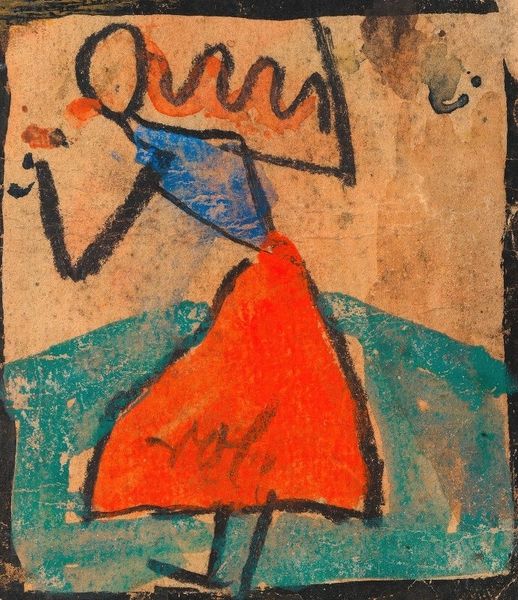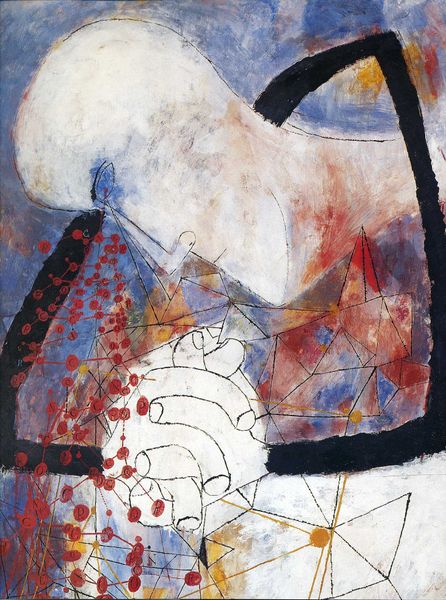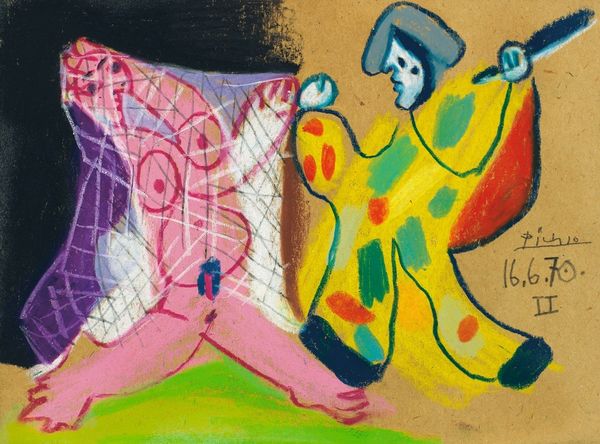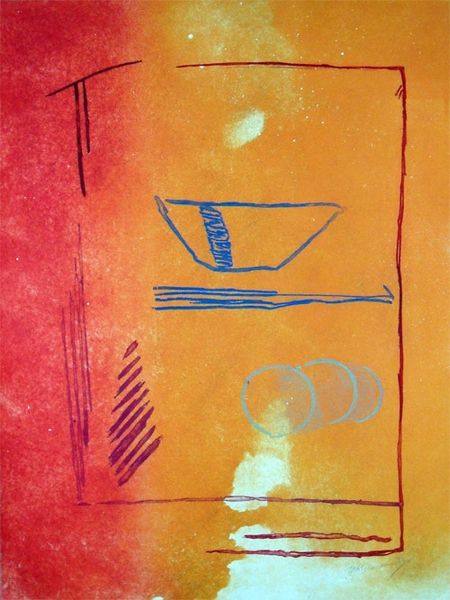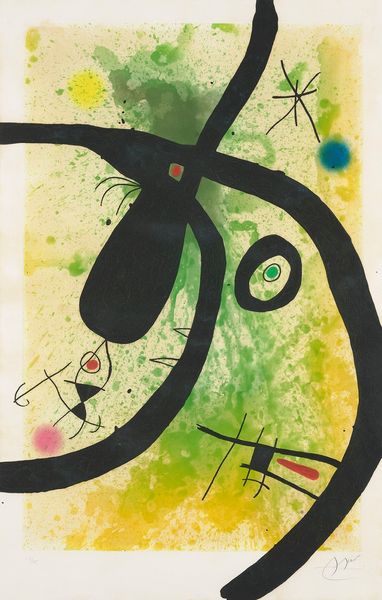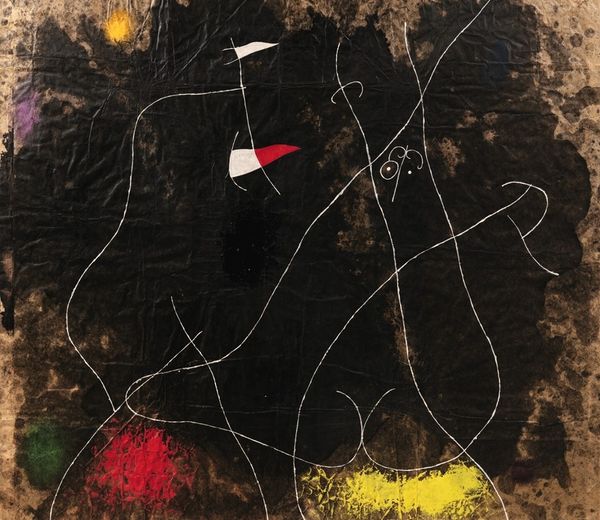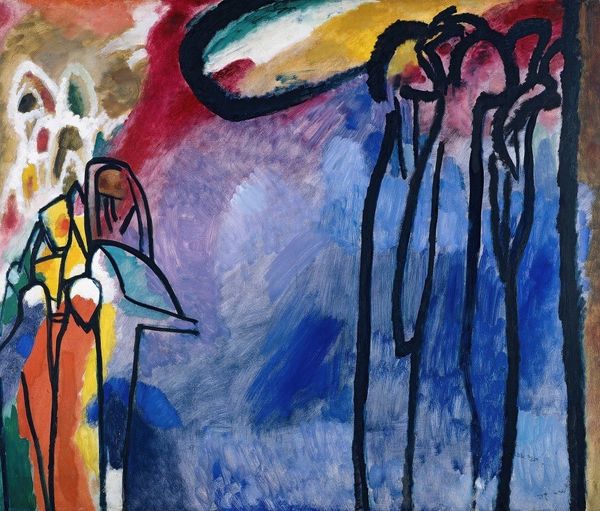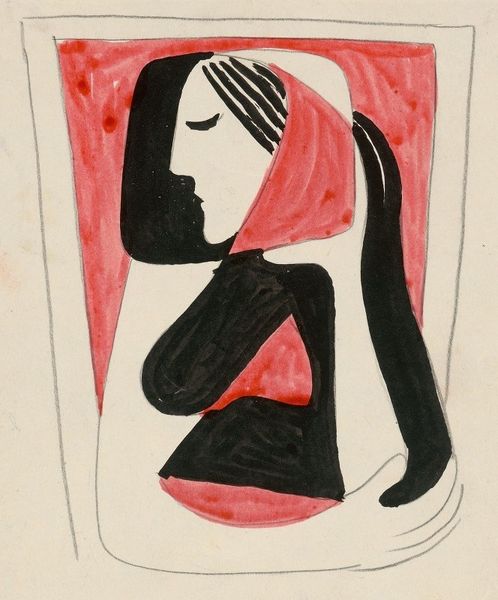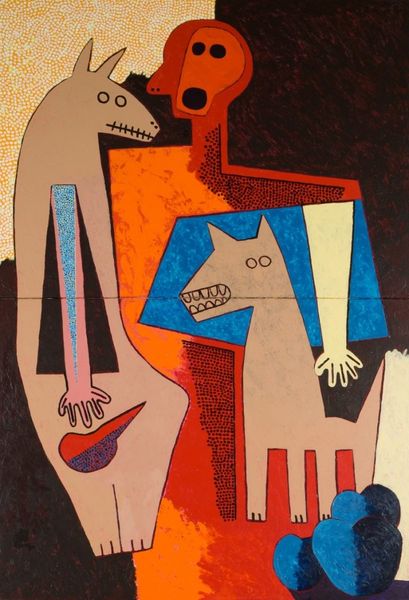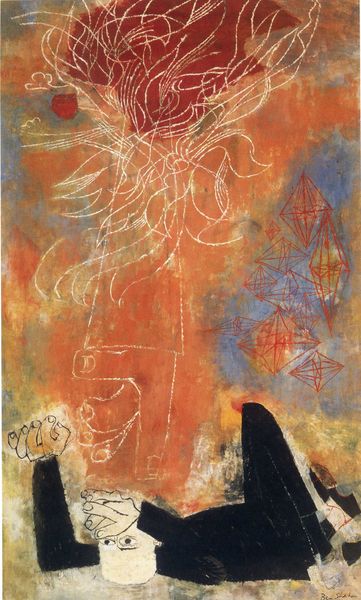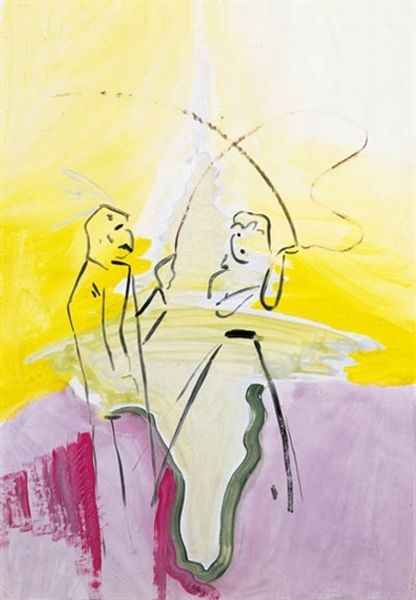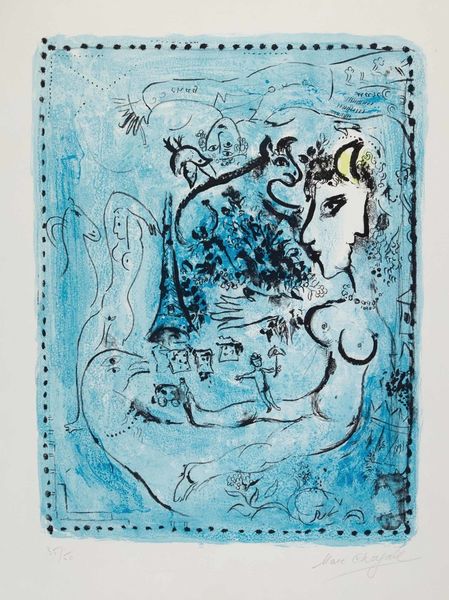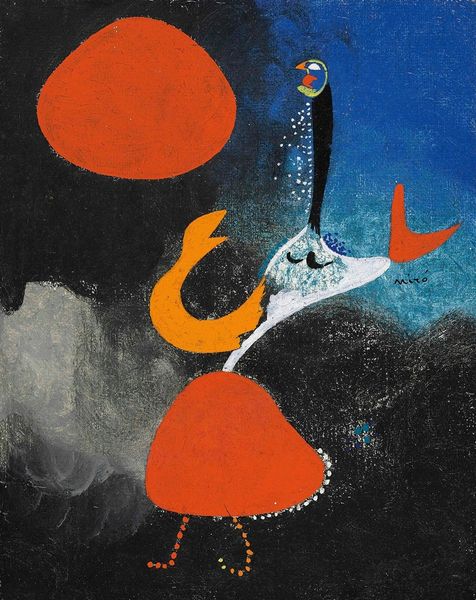
Copyright: Modern Artists: Artvee
Editor: Here we have Joan Miró's "Deux personnages," created in 1938, using watercolor. I find this piece surprisingly whimsical, considering the looming darkness of the period. What do you see in this seemingly simple composition? Curator: Whimsical is a lovely starting point. It tickles my brain too! Those seemingly simple shapes—the figures, the dominant black orb—they speak to me of hidden narratives, almost like dreamscapes projected onto paper. Doesn’t it feel like eavesdropping on a silent, playful conversation? But under the surface, don't you sense a subtle disquiet? Editor: Definitely! The bold, almost childlike rendering clashes with the intensity of the colors. The black shapes are both playful and oppressive. Curator: Precisely. Miro painted this during the Spanish Civil War. Do you think that contrast maybe expresses the tension he, as a Catalan, felt? Editor: Ah, that makes sense! So, that large black shape isn't just a shape. It could be symbolic of… the dark clouds gathering over Europe? Curator: Perhaps! Or maybe it is just that, a shadow? Or a visual echo of the unconscious taking over. Miro didn't offer easy answers, which is where the magic lies! Editor: So, it’s up to us to make our own connections. I appreciate that, and hadn’t considered the historical context before. Now I have a very different perspective. Curator: That's art, isn't it? We see a reflection of ourselves reflected *back* through the artist's looking glass. I may not be able to give an exhaustive meaning of the artwork, and neither should you want to do the same. I enjoyed this whimsical interpretation; thank you for sharing it!
Comments
No comments
Be the first to comment and join the conversation on the ultimate creative platform.
